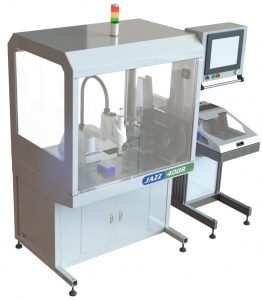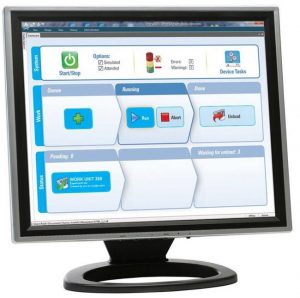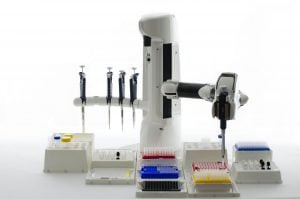New products are helping to bring the modern lab into the realm of science fiction of yesteryear as automation slowly but surely makes its way to the bench.
When Hanna-Barbera produced The Jetsons for ABC in 1962, little did they know how much of their cartoon would become reality 57 years later. Robots would be walking across stages to accept diplomas for a graduate who was unable to physically attend her graduation. Cars would be able to drive themselves. And factories and laboratories could run automatically.
Most pharma and biotech companies — and in part also academic labs — have automated sections of their processes and make use of liquid-handling systems, especially those pursuing high-throughput screenings. But compared with manufacturing and service industries, the life sciences sector has room to grow to catch up to other industries in terms of using laboratory automation to improve productivity and quality.
New lab products are making the advancement achievable, replacing humans with robots or other devices and using computers to monitor experiments and integrate the data. This upgrade not only enhances productivity, but also increases reproducibility and accuracy.
Meet Andrew (left). Andrew is a new liquid handler that enhances the reproducibility and efficiency of a laboratory by assisting scientists with fully unattended automated pipetting. Andrew empowers scientists to get reproducible data – and its software, AndrewLab, offers an intuitive solution for protocol design. With Andrew, labs can quickly and seamlessly transition from painful and time-consuming manual pipetting to programmable robotics that should remove the human margin for error.
Reduction in labor is an unavoidable consequence of lab automation, but it does not always mean job loss. Years before the automated lab at UAB Hospital in Birmingham, Ala., materialized, Sherry Polhill, associate vice president of UAB’s lab began developing other businesses to launch as soon as the automation went live. The idea behind Polhill’s process was to repurpose trained staff members for positions in new or growing businesses, like the hospital’s lab medicine customer service area, a diagnostic molecular lab, and a drug confirmation lab.
UAB now operates a fully automated lab which has improved the quality of the hospital’s testing services including the use of bar-coded tubes to ensure accuracy of samples collected. Before using the automated system, it was challenging to track the location and status of samples as multiple hands touched each sample.

While moving to an automated lab takes research, time, and looking into the countless platforms available, ThermoFisher Scientific offers options for labs automating a single process to those upgrading to a fully automated lab. Their Momentum software (below) lets users define, execute, and monitor complex processes by enabling multiple workflows via real-time, data-
As everything moves toward more automated systems, from smart homes to security robots in airports, automated labs will only continue to expand in the healthcare industry. For those considering moving to an automated lab, lab managers that have made the switch have suggestions for going to the new platform — talk to others who use the system to get honest feedback, begin with a plan for making the switch including an in-depth timeline of the process, and be patient as the process is not an immediate switch.
While the majority of labs that have moved to an automated system highly recommend the process, each lab should take a look at its specific needs and goals to determine the appropriate channel for moving toward a fully automated lab.
–Carson is a Birmingham, Ala.-based writer and contributes the monthly EndoGear column to Endocrine News. She wrote about the high points of New Orleans for ENDO 2019 in the November issue.


